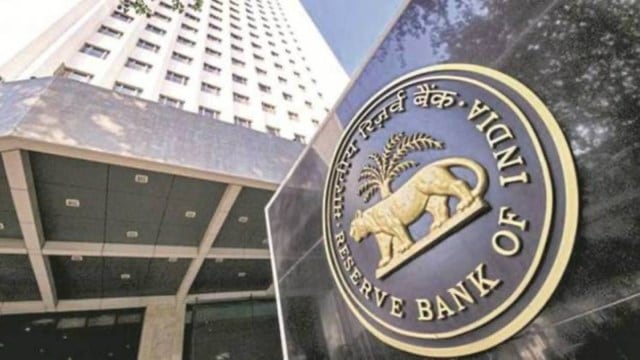
RBI’s Monetary Policy Committee (MPC) left the policy rate unchanged and maintained the stance at neutral, in line with our expectations. With global tariff-related uncertainties still unfolding and impacts of monetary policy actions and recent fiscal stimulus still playing out, the central bank has opted to wait and watch. Importantly, it has clearly conveyed that it could go for a policy rate cut in the future if growth headwinds intensify.
The RBI Governor’s statement aptly highlights that the growth-inflation dynamics have changed since the last policy meeting in August. There is a higher threat on the growth front as India faces steep US tariffs of 50 per cent. With goods exports already reeling under tariff pressure, the recent announcement by the US of higher H-1B visa fees and the proposed HIRE Act (Halting International Relocation of Employment), which seeks to curb outsourcing by US companies, reflects likely risks to India’s services exports. While the global concerns have aggravated, there are some supporting factors for domestic demand. The recent rationalisation of GST rates, reduction in income tax burden, a good monsoon, benign inflation and lower interest rates are supportive factors for growth.
While the growth story is uncertain and evolving, there is comfort on the inflation front. The inflation projection for FY26 has been lowered to 2.6 per cent from the earlier projection of 3.1 per cent. Benign inflation projection reflects sharper than expected moderation in food inflation and the impact of GST rationalisation. Core inflation is currently contained at around 4.2 per cent, even with a sharp increase in precious metal prices. Excluding precious metal prices, core inflation is lower at around 3 per cent. While CPI inflation is estimated to remain sub 2 per cent in the second and third quarter, it is likely to pick up next year. Given the very low average inflation in FY26, next year CPI inflation is projected higher at 4.5 per cent. Overall, there is no expectation of a build-up in prices, the higher inflation projection for next year is mainly a statistical impact of low base. Having said that, next year’s monsoon and geopolitical events will play a critical role in inflation projection.
On the external sector front, uncertainties continue to linger amid high tariffs imposed by the US. While India’s goods exports feel the pinch of higher tariff, services exports remain healthy. We estimate India’s current account deficit to GDP to remain comfortable in the range of 0.9 per cent to 1.3 per cent, depending on the tariff scenario. Apart from healthy services exports, the current account will be supported by remittances and benign global crude oil prices. Capital flows have been adversely impacted by persistent FII outflows from the equity market and feeble net FDI flows. Capital flows are likely to remain volatile in the midst of the global uncertainties. However, India’s high foreign exchange reserves of around $700 billion are a comforting factor.
System liquidity has remained broadly in a surplus mode with the RBI intervening as required. Going ahead, there will be further infusion of liquidity in the near-term due to the CRR cut. While the transmission of rate cuts to the banking sector has picked up in the last couple of months, it remains incomplete. And that’s also a reason the central bank was not in haste to cut the rate further.
An important aspect of this monetary policy was the other announcements geared towards strengthening the banking sector. The announcement of Expected Credit Loss (ECL) Framework and revised Basel III capital adequacy norms from April 2027 is an apt step towards a robust and resilient banking sector. Moreover, measures like enabling Indian banks to finance acquisition by Indian corporates and enhancing limits for lending by banks against shares and for IPOs will aid in enhancing the flow of credit. There was also a focus on deregulation and improving the ease of doing business, in line with the government’s focus in this year’s Union budget. The RBI has also announced some measures towards internationalisation of the rupee. In this regard, AD (authorised dealer) banks have been permitted to lend in Indian rupee to non-residents from Bhutan, Nepal, Sri Lanka for cross border transactions. Further, to promote wider use of Special Rupee Vostro Accounts (SRVA) balances, the RBI has permitted balances of these accounts to be invested in corporate bonds and commercial papers.
Overall, this was a very aptly formulated monetary policy in the midst of domestic and global uncertainties. The decision to leave policy rate unchanged, leaves ammunition with the RBI to act if growth falters, while also giving time to analyse the impact of monetary and fiscal stimulus given so far. The other important feature of this policy is the clear direction given on the future trajectory, as the central bank highlighted that there is room for monetary easing in the future. Importantly, apart from the policy rate decision, there was increased focus on other critical areas like strengthening the banking sector, improving the flow of credit, simplifying foreign exchange management and improving the ease of doing business.
Currently the biggest threat to the Indian economy is the global environment. The government is trying to negotiate a trade deal with the US, but uncertainty lingers in terms of the timing and form of this deal. If the 50 per cent tariff rate persists, India’s merchandise exports and overall growth will feel the brunt. While the RBI has already cut rates by 100 basis points in the current cycle and the government has also announced growth-supporting measures, the net impact on growth remains uncertain. We feel that there are chances of a 25 basis points rate cut in the next MPC meeting in December, if growth concerns intensify.
The writer is chief economist, CareEdge Ratings